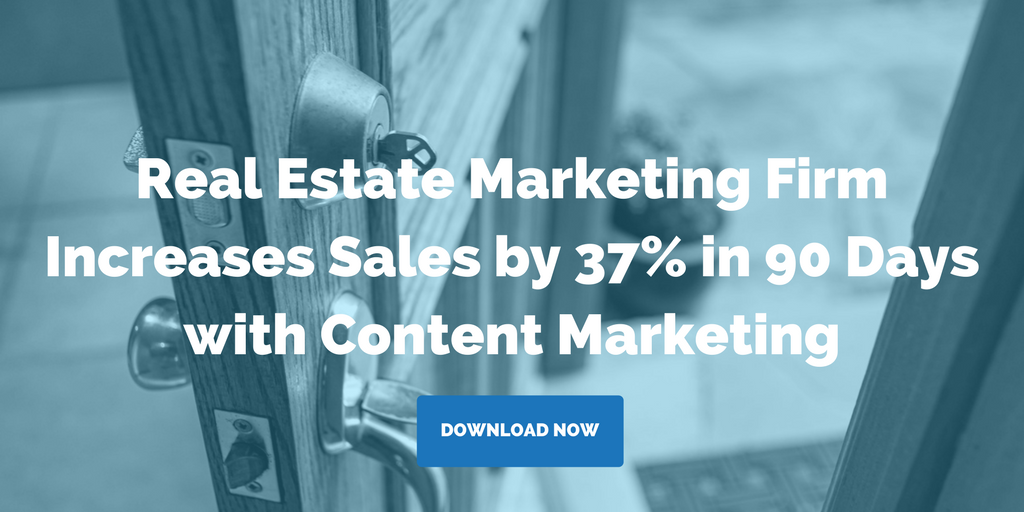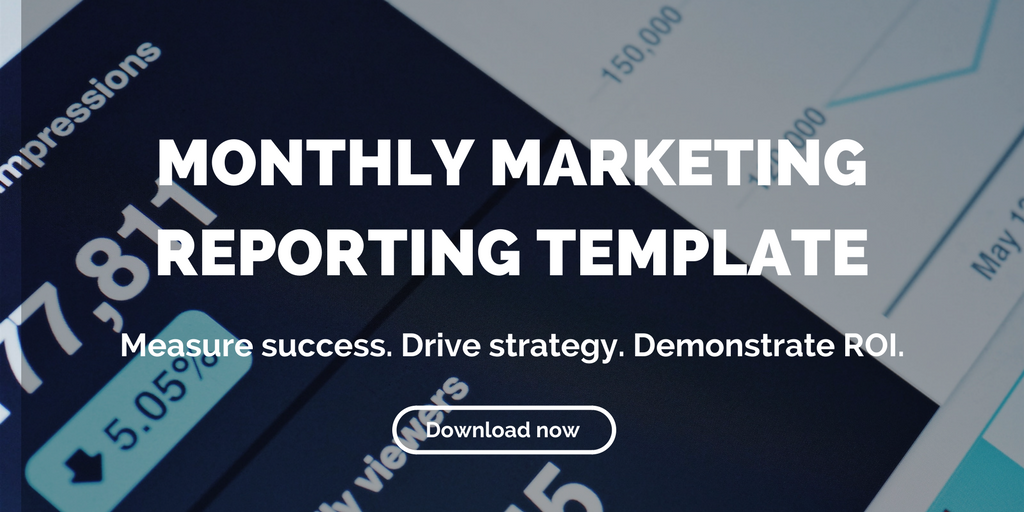Archive for Elizabeth Hines

4 Ways to Scare Away Real Estate Buyers with Content Marketing
If you’re committing these content marketing don’ts, you could scare away real estate buyers instead of attracting them.
As a real estate marketer, your job is to attract prospective buyers and tenants — so the last thing you want to do is misfire and scare people away. Yet, only a third of content marketers rate their content marketing strategies as extremely or very effective.
You want — and need — to be a voice that steers your company through a side of the business that is ever-changing. But even with the best intentions, you might be approaching your audience with the wrong tone, and that can cost you sales.
We’ve got just the plan to make sure your content is in check with what buyers and renters want. Here is our list of content marketing don’ts — the top four offenders that scare away real estate buyers.
4 content marketing don’ts
1) Don’t be generic.
Understand your audience and what makes them click. Real estate buyers want to feel a special connection with the property they buy. If your messaging isn’t personable and personalized, you run the risk of disengaging potential buyers.
Create content that is audience-focused, honing in on what your audience wants to read, not what you want to tell them. Do your research and position your content marketing strategy to focus on prospective buyers’ wants and goals — not yours.
2) Don’t try to sell, sell, sell.
Trying to pass off a blatant sales pitch as content will only hurt your content marketing efforts. Readers view content that isn’t sincere, informative, or authentic as disingenuous, and they’ll quickly turn away.
The same goes for content that’s filled with excessive keywords and multiple links meant to boost SEO results. Everything should be done in moderation so the potential buyer — and search engines — isn’t turned off.
Don’t expect your content marketing strategy to result immediately in increased dollars. Building rapport with your target audience takes time with an often-delayed payout.
3) Don’t sacrifice quality.
If your content is shoddy and low quality, potential buyers won’t bother with it. By and large, your prospects value quality, consuming content that offers value and is relevant to their needs and interest in private or commercial real estate.
Rather than publishing many low-quality blog posts, stellar content that stands out will go a long way in improving the buyer’s perception of your property. And adding a variety of media (e.g., photos, videos, infographics) to posts contributes to their value and boosts credibility. Video is an especially powerful medium in real estate marketing. Images and videos take extra investment, but they go a long way in helping the buyer visualize themselves in a property.
4) Don’t go unplanned.
Ensure your content is relevant by documenting a strategy, following it, and adjusting it as needed. An editorial calendar is a great place to start.
Brainstorm ideas for content with colleagues and buyers. Document your goals and methods, and create a plan for attaining them to give your marketing plan organizational clarity. Consistency is king — haphazard content marketing won’t get you anywhere.
Related posts:
- Start Your Property’s Social Media Program in Six Steps
- 6 Marketing Tasks Real Estate Marketers Can Outsource
- Social Media Can Be a Strategic Weapon in Real Estate Marketing
Archive for Elizabeth Hines

Start Your Property’s Social Media Program in 6 Steps
When launching a property’s social media marketing program, make sure you’ve thought through strategy, content, and audience.
Social media marketing for real estate is a must-do. The reality is that’s where the average American is spending his/her free time — nearly 2 hours a day, according to a recent study. Using platforms like Facebook, Twitter, and YouTube to market your property, you can:
- engage potential buyers
- build brand awareness
- elevate brand position within the market
- decrease cost per lead
- increase occupancy or sales
- improve retention
- and more
Sounds great, right? But where do you start? Which platforms should you use? How will you ever convince your boss that this is a valuable use of your time?
Starting your property’s social media program can seem like an intimidating task, especially if company leadership is skeptical of the benefits. Here are six steps to launching a real estate social media program that will grow your business to its full potential.
6 steps to start your property’s social media program
1) Speak in the right terms.
Convincing management that you want your team to spend more time on social media to gain “followers” or get “shares” could be a hard sell — even though that kind of engagement is key in real estate sales and rentals. To win support, focus your argument around the factors that are most important to them. Lead generation, lead nurturing, conversions, sales, ROI, profits: this should be the vocabulary with which you approach this conversation.
2) Create a strategy — and put someone in charge.
Only 11% of companies without a documented content marketing strategy find their efforts to be successful, compared to 60% of companies with a strategy in place. And that number rises to 86% when the company designates someone to lead the strategy.
Develop a content marketing strategy — inclusive of social media — that aligns with your goals for the property (e.g., more visits to the website, increased occupancy, better retention rates). And whether someone on your team heads up execution or you outsource that responsibility, the leader should continually monitor analytics and tweak the strategy accordingly to ensure the property’s social media program is meeting the designated marks.
Which brings me to…
3) Determine which analytics to track.
In real estate social media, shares, likes, and impressions speak to your brand exposure, so they’re important to track. But it’s important that you’re looking at more than just these surface metrics. (Read more about so-called “vanity metrics” here.) Leads generated, conversion rates, sales, and ROI are going to tell you if your efforts are helping your bottom line. If you have a good, flexible strategy in place, these metrics will help you adjust your efforts to ensure you’re achieving your business objectives.
4) Develop quality content.
Twenty-seven million pieces of content are shared every day — and a large portion of it is crap. A social media presence could be pretty pointless unless you’re not using it in a way that your followers find valuable. Good, quality content is the alpha and the omega, the key to engaging your followers.
One of the biggest mistakes real estate marketers make is using social channels to push a blatant sales pitch. You’ll quickly lose your audience that way. Your property’s social media should be about engaging target buyers or tenants, building brand awareness, and offering valuable and interesting information.
5) Decide which channels are right for your business.
Who are you trying to reach, and what are you trying to tell them? These are good questions to ask when trying to determine which platforms will comprise your social media program. You need to know who your target buyer/tenant is, and you need to know what kind of information you’re going to offer them.
There’s a wealth of data out there about who uses which channels and when. Most social media platforms also have their own built-in analytics tools that can help you determine the best time for engagement with your followers.
Another thing to consider: You’ll want to choose channels that you’ll be able to maintain regularly and which play to your strengths. If you don’t have the time, skill, or interest in taking regular photographs of things around your property, for example, Instagram probably isn’t for you. Remember, you’ll likely want to work through several different channels to reach a maximum number of potential customers.
6) Follow your competitors.
Following your competitors is a great way to stay up to date on what they’re doing, especially if you don’t have a ton of time or money for competitive research. And when I say “follow,” I don’t mean “copy or imitate.” I mean subscribe to their blogs, engage with them on social media, and like and share their content that you find meaningful for your audience. This way, you become part of the local conversation happening online, and you know exactly what your potential buyers and tenants are seeing from (and how they’re reacting to) your competitors.
Related posts:
- The Metrics You Should Be Measuring in Real Estate Marketing
- 6 Marketing Tasks Real Estate Marketers Can Outsource
- Social Media Can Be a Strategic Weapon in Real Estate Marketing
Archive for Elizabeth Hines

This Is the First Thing You Should Do in Real Estate Marketing
Without a documented strategy, your content marketing is doomed to fail.
Content marketing is one of the most effective ways to elevate your property’s reputation in the market, reach prospective buyers or tenants, and increase occupancy. Yet while many real estate marketers are using content marketing, not all feel their efforts are successful. Why do so many organizations feel they are failing? Simply put, they do not have a documented strategy in place.
You would never operate your business without 1) creating a strategy, 2) documenting it, and 3) following the strategy. Nor should you launch a marketing program without having a clear idea of what you want to accomplish and how you plan to do that.
A documented strategy = a successful strategy
A content marketing strategy outlines the methods by which you will target, reach, and engage your audience. Research and execution of these tasks can be quite complex. Writing out a plan and assigning appropriate resources can offer clarity and guidance to your organization throughout the course of your marketing efforts.
Also, remember that content marketing is more of a marathon than a sprint, and achieving results often takes months, even years. Documenting your strategy allows your team to keep focused on your goals and your plan for achieving them in the interim.
Here’s why you should take the time to draw up a plan and then write it down.
1) A documented content marketing strategy is more successful than an undocumented strategy or no strategy at all.
Research and analysis conducted by the Content Marketing Institute (CMI) reveals that only 27% of B2C marketers surveyed have a documented content marketing strategy. 50% of those surveyed said they had a strategy, it just isn’t written down. According to the CMI, “That’s a huge problem. If it’s not written down, then it probably doesn’t really exist.”
Because effective content marketing requires a team effort with a cohesive vision, having an undocumented strategy means you might as well not have a strategy at all. For everyone to be on the same page, it’s important to quantify goals, set a detailed plan, and document results.
2) A documented content marketing strategy helps measure ROI.
Many real estate companies struggle with content marketing or have trouble garnering support for the program because return on investment is notoriously difficult to measure. In fact, more than half of marketers say one of their top challenges is measuring content effectiveness (57%) and/or measuring the ROI of their content marketing program (52%).
Having a documented strategy in place gives your organization measurable goals against which to compare your results. Your strategy should:
- Document what you hope to achieve through content marketing — more leads, higher conversion rates, more social media followers, etc.
- Outline a specific methodology for executing those goals
- Assign human resources to each of the tasks
- Designate intervals at which to check in and evaluate/adjust your efforts
- Offer a timeframe for completion
Documenting your strategy in such a way clarifies where you are investing time and resources so that calculating ROI is less of an abstract process.
Related posts:
- The Metrics You Should Be Measuring in Real Estate Marketing
- 6 Marketing Tasks Real Estate Marketers Can Outsource
- Social Media Can Be a Strategic Weapon in Real Estate Marketing
Archive for Elizabeth Hines

The Metrics You Should Be Measuring in Real Estate Marketing (Hint: Not Vanity Metrics)
Don’t waste your time reporting on vanity metrics, which won’t tell you whether you’ve achieved your ROI.
We all want to see the fruits of our labors. Whether renting a new property or launching a social media campaign, we look for instantaneous numbers that will affirm we made the right choices. But here’s the problem: not all metrics are created equal.
So-called vanity metrics are measurements that have no bearing on your bottom line but can give you an inflated sense of success. Generally, they are easy to calculate but are influenced by too many factors — and are too vulnerable to random external events — to be reliable.
Website visits and number of subscribers are two classic examples. A spike in homepage hits may be the result of your marketing efforts, or it may be because of ghost spam. (Or both.) Regardless, more visits do not necessarily correlate to increased revenue — just more visits. In the same vein, having 100,000 email subscribers means nothing if only 1% are opening them. You actually could be losing money in terms of resources allocated if the emails aren’t helping drive sales.
Investment vs. vanity metrics
That’s why it’s crucial to focus on return on investment instead of vanity metrics. You could waste hours reviewing a hundred different analytics that tell you nothing about how revenue was affected by a particular effort. Or, worse, you could use vanity metrics to justify decisions that don’t achieve their ROI.
As a simplified example: say you spend $1,000 on a display ad for a new apartment complex targeting established professionals on a local news website, and your analytics report that 100 people clicked through. This sounds like success! But don’t celebrate just yet. When you dig past the vanity metric, you find an extremely high bounce rate. That means most of those click-throughs left your site immediately, neither engaging with your property nor moving any closer to becoming a tenant. In fact, you find that only one click-through converts. Was it worth paying $1,000 for this one potential tenant? Probably not.
But say you ran another $1,000 display ad, one that targets a younger audience than you think your property fits. Only 20 visitors clicked through, which sounds less successful than the other ad. But when you follow those 20 click-throughs, you find that 5 ended up renting units, meaning the ad pays for itself many times over. You’ve also learned that perhaps a younger audience is more suited than you thought to your property. The ROI proves that the vanity metric was quite misleading in this case.
Metrics that help you make decisions
Lean-startup pioneer Eric Reis, who coined the term vanity metrics, said, “The only metrics that entrepreneurs should invest energy in collecting are those that help them make decisions.” In other words, measure the things that will tell you if an effort was profitable so you know where to put your time and money.
While vanity metrics tell you nothing about your bottom line, ROI can help you determine whether it was worth spending your resources in a particular way. This is extremely useful on platforms like blogs and social media, where things are constantly changing. Using ROI as a litmus test, you can keep experimenting and making sure you’re using these tools effectively. Tracking a vanity metric like number of followers, which is likely to build over time regardless, gives you no indication of which experiments were successful and which weren’t.
Your resources are limited, so it’s crucial to evaluate your efforts with meaningful numbers that illustrate their effect on your bottom line. Calculating ROI might take some time — both in the few extra minutes to do the math and the amount of time that needs to pass before all the data is available — but that number will be infinitely more valuable to you than any vanity metric on your Google Analytics report.
Related posts:
- Social Media Can Be a Strategic Weapon in Real Estate Marketing
- How Pay-Per-Click Helped This Property Get 54 Leads
- Learn How Content Marketing Increased Real Estate Sales by 37% in 90 Days
Archive for Elizabeth Hines

4 Tools for Determining the Best Time to Post on Social Media for Your Property
Determine when and where your target buyers are online to find the optimal time to post on social media.
Social media has changed the landscape for doing business, particularly when it comes to real estate. With the click of a button, companies are able to instantly communicate with untapped markets and potential buyers and tenants. Face-to-face interactions are often overshadowed by live streaming videos, tweets, chats, and likes. For real estate sales and rentals, the possibilities for social media marketing are virtually endless.
But it’s not enough to curate content for your social media platforms. Today’s social media users expect fresh, innovative ideas around the clock. And when this content is being shared is just as valuable as what is being shared.
There’s a lot of research out there that highlights the optimal time to post on various social media platforms. For example, marketing analytics software provider TrackMaven has published its Best Times to Post on Social Media Cheat Sheet, which breaks down posting by industry, brand, and product. It also offers general dates and times that can boost success.
But the truth is, there is no one-size-fits-all social media posting solution.
You need to take it one step further. You need to know the best time for your unique property to post content. You want more than just a general idea of when to post. You want specific information about your target buyers and tenants — when they’re actively scrolling, reading, watching, and liking your content.
As you get a sense for when your target audience is most likely to interact with your content, be sure to keep in mind the ideal frequency for real estate companies to post to each social media platform.
Determining the best time to post on social media
There’s a broad range of tools available that will analyze the personal data of your social media followers and help you compute the best time to post on social media. Here are four that we think offer the most useful information and are easy to use.
1) Hootsuite
Hootsuite is a social media management tool that can do everything from scheduling social media posts to measuring your social media ROI. The AutoSchedule feature lets Hootsuite determine the best time to publish a post or tweet based on when similar content performed well in the past. It also considers the platform and can publish the same message at different times based on audience engagement on each particular network.
2) Tweriod
Tweriod, a free Twitter tool that helps you know the best time to tweet, is changing the way companies approach their marketing tweets. It will evaluate up to 1,000 of your followers and their tweeting patterns, including schedule, interests, and retweets. You then receive an analysis of when your tweets will receive the most exposure.
3) Google Analytics
Google Analytics is a robust analytical tool for determining how web users are interacting with your digital assets, including social media. Three custom reports (Best Days to Post on Social Media, Best Time to Post on Social Network by Hour, and the Social Media Traffic by Date and Hour) offer real-time, in-depth insight. Best of all, Google Analytics is free!
4) SproutSocial
SproutSocial offers a customized dashboard with a quick overview of how your social media channels are performing. You also can gain deeper insight into your customers — like gender and age demographics, crucial information for real estate marketing. And you can assess your customer reach and what will work in your favor.
Creating a strong social media presence is essential for any property. But having a presence is just a starting point in understanding how to fully optimize these ever-changing platforms to work for you.
Using online tools to analyze when and where your content should be posted will enhance the value of your social media efforts. In short, you have the best chance of generating leads and closing deals by pushing your content through the right avenues at the right time.
Related posts:



